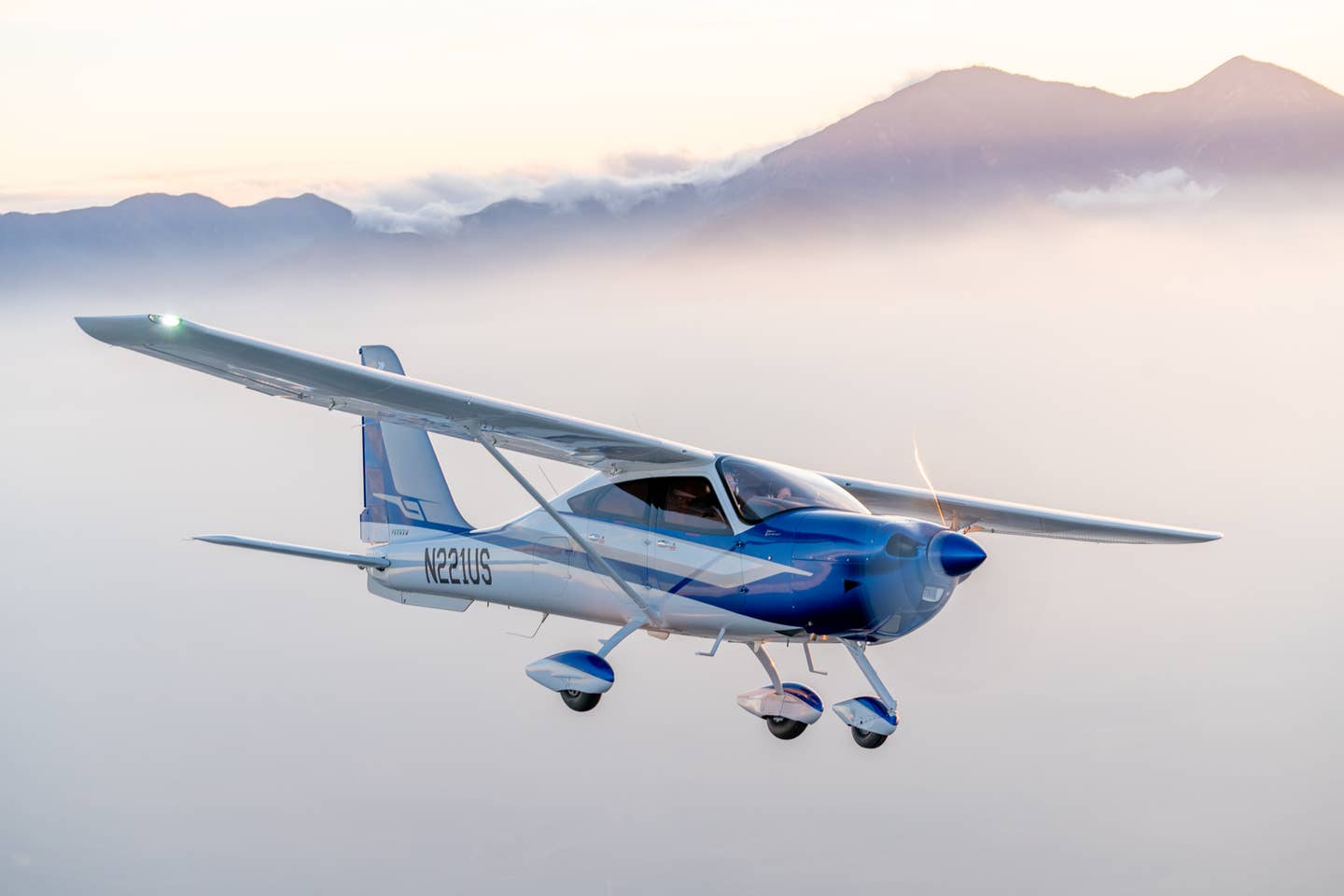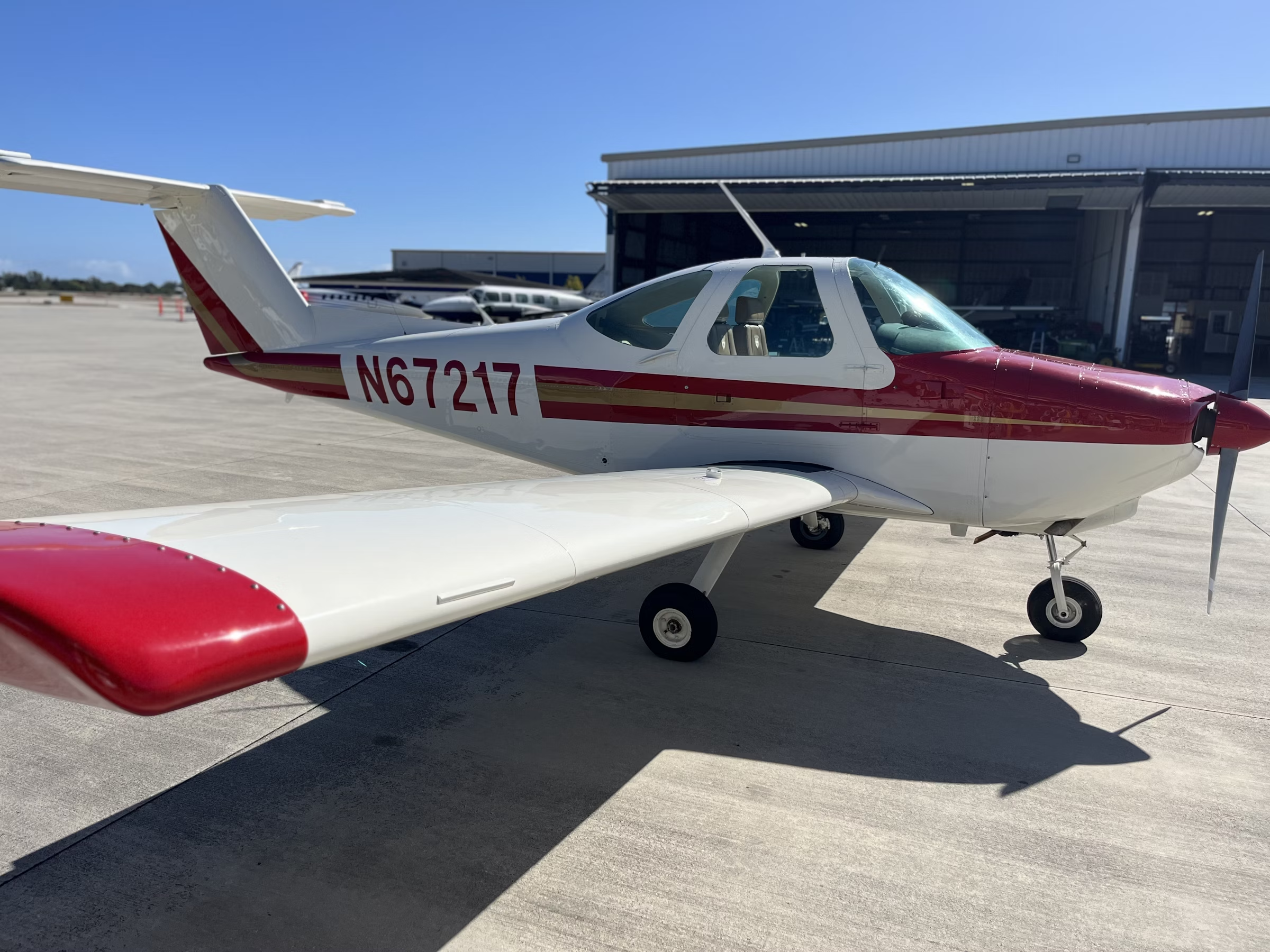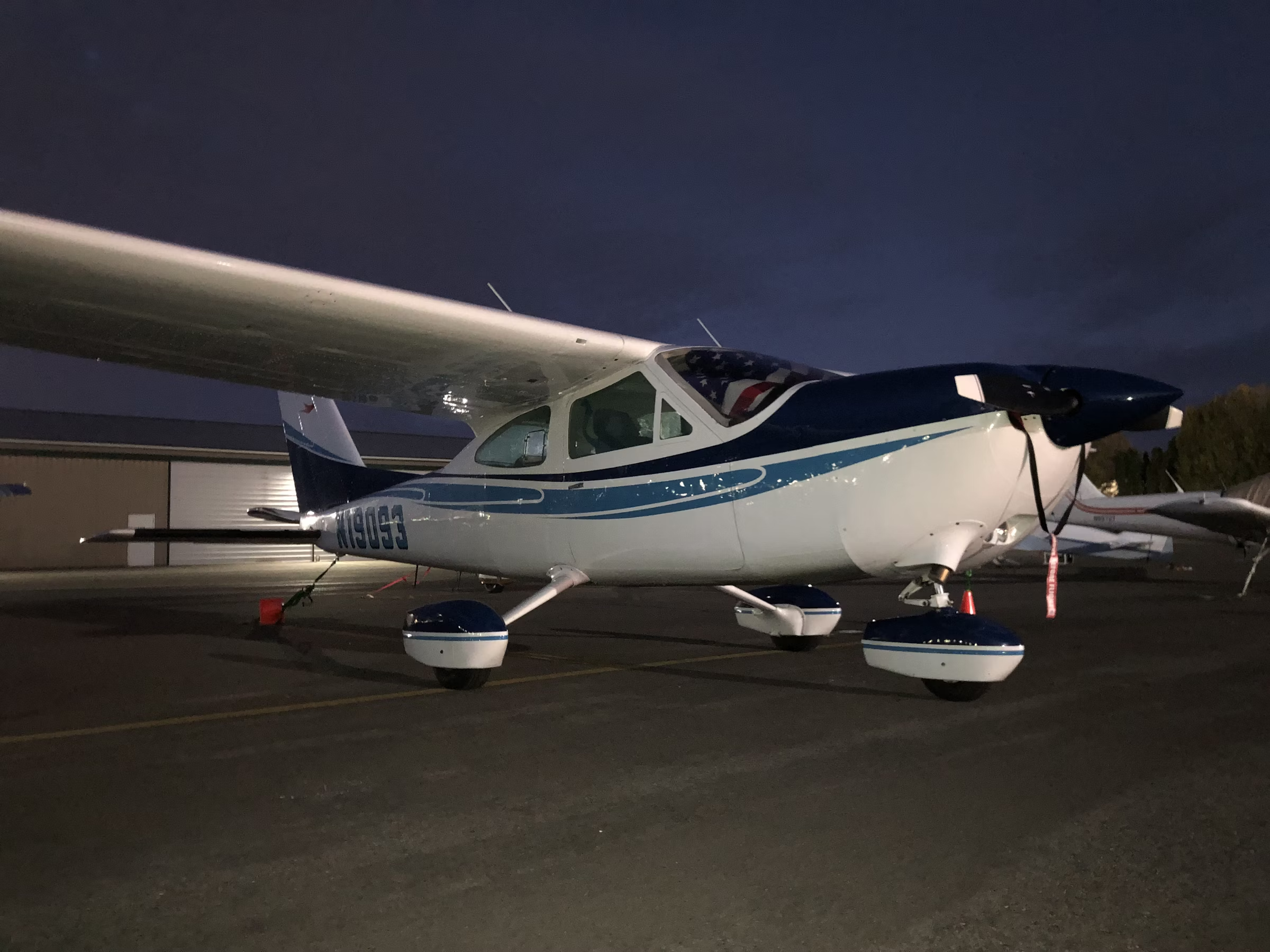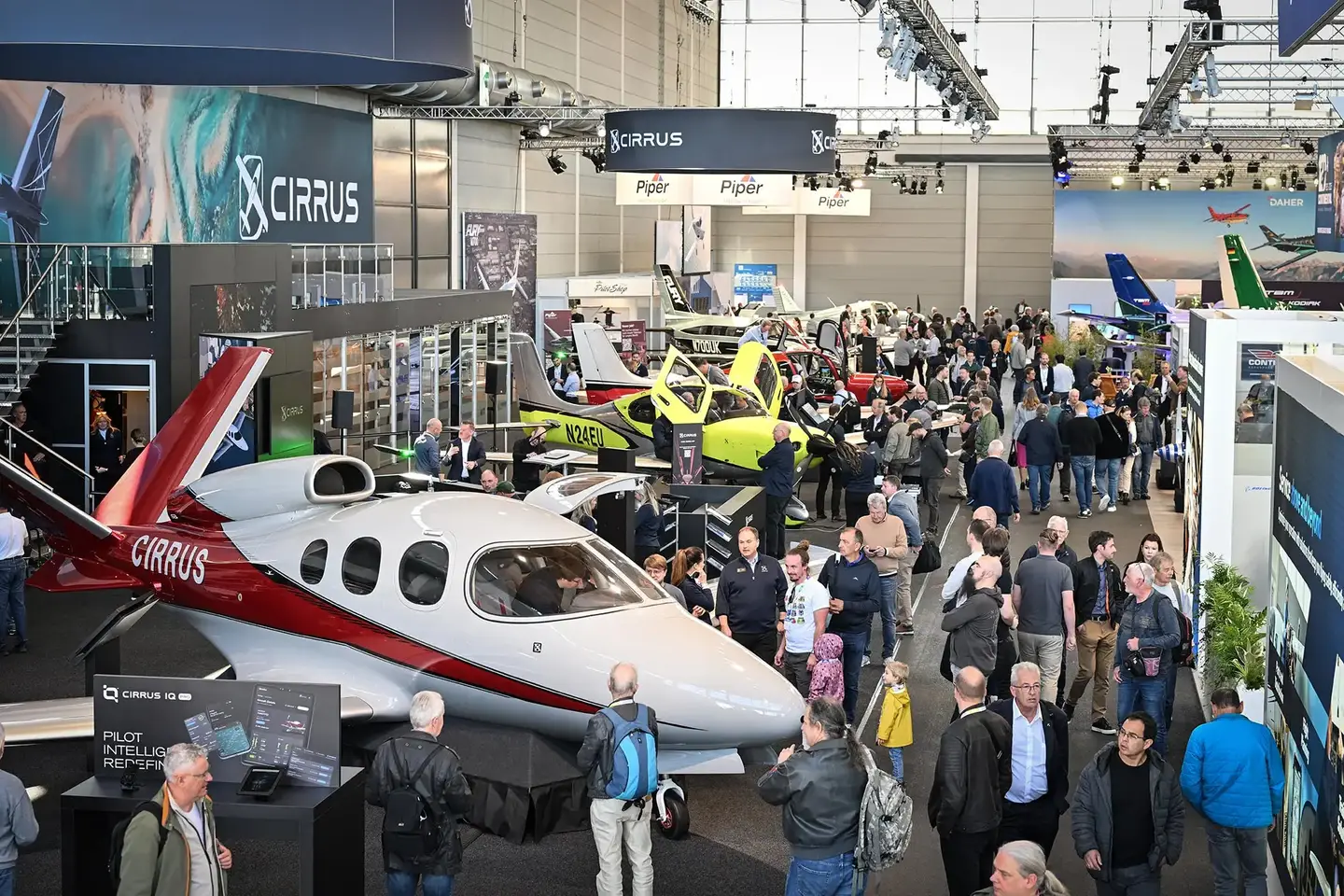
Tecnam may be a relative newcomer to the U.S. market, but the company has a rich aviation history dating back to 1948. The Pascale family launched into aviation by designing a variety of aircraft for themselves and their customers.
One aircraft in particular, the P55 Tornado, caught the attention of enthusiasts by winning the prestigious Giro di Sicilia air race. From that success, the family gained enough notoriety and confidence to start the first company—Partenavia.
If you're not already a subscriber, what are you waiting for? Subscribe today to get the issue as soon as it is released in either Print or Digital formats.
Subscribe NowFrom humble, pre-World War II beginnings to multiple state-of-the-art facilities today, Tecnam strives to be a dominant player in the piston market. The plan to find niches that can be exploited and dominated by aircraft designed to be class leaders has served the company well and is gaining traction. Tecnam produces a range of aircraft from light sport aircraft, to piston twins used in short haul commercial applications, to the recent 2024 FLYING Innovation Award winner two-seat trainer P-Mentor, capable of taking students from zero time through instrument and commercial.
The upscale variant of the P2010, the Gran Lusso, is another example of the company’s ability to fill a void with a well-designed product.
The P2010 (or “twenty-ten”) Gran Lusso, like all current Tecnam aircraft, begins its model designation with the letter “P” that pays homage to the proud Pascale family lineage—no harm there. The number that follows the P indicates the year when the design was born and the aircraft began to take shape. The challenge here is two-fold. First, aircraft development takes years to advance from paper airplane to fully certified aircraft. Thus by the time a model appears on the market, the model name gives it the illusion of being a couple years old. For example, the 2024 Gran Lusso I tested is dubbed the P2010. Second, the naming convention doesn’t provide much indication as to where various products fit in the model line-up. For example, the P2002 is a single, the P2006 is a twin, the P2008 is a single, the P2010 is a single, and the P2012 is also a twin.
- READ MORE: We Fly: Piper M700 Fury
But what’s in a name? In the case of the 2024 P2010 Gran Lusso, the thing to focus on is why the aircraft is deemed Gran Lusso, Italian for “grand luxury.” The aircraft is elegant looking, tastefully appointed, and its refinements (thanks largely to its FADEC turbo-diesel powerplant) include simplicity of operation from one-button start to the elimination of both mixture and prop controls.
Airframe
The aircraft has attractive, sleek contours, common among composite fuselages, accentuated by complementary finish of a beautiful paint scheme. Italian fashion models have long been heralded for their curvaceous lines and chiseled features, and the Gran Lusso has similar sex appeal on its own runway.
Interestingly, the P2010 variants have three different tail configurations based on what is slung firewall forward. Empennage configuration changes slightly with different powerplants—Continental CD-170 (170 hp), Lycoming IO-360 (180 hp), and Lycoming IO-390 (215 hp)—to achieve the desired handling characteristics. Also curious is the blend of airframe construction methodology, including a metal wing mated to a composite fuselage.
The beauty of composite construction lies in the speed of production (with far fewer parts and labor required), its favorable weight-to-strength ratio versus aircraft aluminum, and the ability to craft complex shapes seamlessly (with lower parasitic drag) from large-scale molds. However, carbon fiber materials are generally more expensive than aircraft-grade aluminum. Consequently, even with the added production time of riveting overlapping skins to stamped metal ribs and bulkheads, aluminum construction can be more cost-effective. Some may argue that making metal field repairs may also be easier in the case of hangar rash or bird strike.
Regardless of the manufacturing strategy, the airframe is a thing of beauty with attention to detail in such mundane items as a door handle portends that no detail is too small to be thoughtfully designed. And speaking of doors, the aircraft also boasts another thoughtful feature rare in a four-place piston single—a rear passenger door (more on that later).
Cabin
Approaching luxury automotive fit and finish best describes the interior in a single sentence. Legacy aircraft designs have long perpetuated an odd juxtaposition between the bougieness of what one drives to the airport and what one flies away.
Aircraft designed in the 21st century have all benefited from and exploited a path that brings the aircraft experience closer to the auto interior experience (noise level aside). And given what new pistons single retail for these days compared to luxury cars, making the aircraft feel like a luxury auto experience helps make the price tag seem like a better value for those who need the justification.
In the Gran Lusso, everything the pilot and passengers see, touch, and interface with has a premium feel, most of which is wrapped in Italian leather and hand-stitched—the French way. The interior is also available in six color schemes with carbon-fiber inlays.
Vents, cleverly ducted from the front of the engine cowl to the panel provide an immediate airflow for cooling upon engine start. Even if the fuselage has been turned into a terrarium by the summer heat, the airflow facilitates evaporative cooling until the temperature lapse rate of higher altitudes substitutes for air conditioning.
The front seats are electronically adjustable up and down, and manually fore and aft. At 6-foot-1, I had ample leg room without the seat at the rear stop leaving extra leg room for back-seat occupants. The rear passenger door makes ingress and egress more elegant than adjusting seats and seat backs and clambering from front to back. Even with the front seats fully aft, the rear door provides an unobstructed entry portal. Once comfortably seated, passengers will find ample options for charging devices, lighting, and cooling.
The baggage area is also flexible and accommodating. The rear seats are relatively easy to remove as are the baggage-area panels, making it easy to load larger, longer items like downhill skis through the rear passenger door, serving as a much larger cargo door.
Avionics
Garmin provides the interface for the last two-thirds of the aviate–navigate–communicate equation. The G1000NXi suite coupled to a GF700 autopilot is an increasingly familiar and incredibly robust panel. Both the G1000NXi and GFC700 have feature enhancements not found in earlier iterations.
The G1000 suite receives plenty of attention, largely because it has become so popular in new aircraft like the ones we cover in FLYING. In reality, fewer than 20,000 aircraft in the fleet boast G1000 avionics, so it’s still worth discussing what’s new.
The NXi version has an updated multifunction display (MFD) featuring a split-screen feature. This allows the pilot to have more pages visible, thereby reducing the need to switch between them to display desired information. The MFD screen can be split horizontally, vertically, or a combination of both for maximum customization.
U.S. operators will benefit from enhanced terrain awareness through the addition of color-coded contouring when the aircraft is 2,000 feet (green shading), 1,000 feet (yellow), and 100 feet (red) agl. Map options include VFR sectional or IFR enroute.
Wireless connectivity now enables the pilot to stream information such as traffic and weather between compatible devices and apps so animated radar imagery can be overlaid on the MFD and the HSI inset on the PFD. Users can also transfer flight plans created on a remote device directly to the G1000NXi.
The GFC 700 also includes visual approach capability for vectors or straight-in approaches with a coupled vertical flight path down to pilot-selectable minimums.
The Gran Lusso’s G1000 is also equipped with features including synthetic vision (optional) and basic envelope protection in what Garmin calls ESP—electronic stability and protection. The system helps avoid loss-of-control scenarios by providing increasingly stronger forced feedback through the yoke if pitch or roll exceeds programmed limits. If the system is activated for an extended period, the autopilot will bring the aircraft back to straight and level flight. This feature can help avoid inadvertent stalls or other loss of control scenarios possibly induced by spatial disorientation.
The good news is, first, the forced feedback can be relatively easily overcome with firm control inputs, and second, the system can also be manually disabled for training purposes.
Engine
The Gran Lusso is powered by an overhead cam, liquid-cooled, fuel-injected, FADEC-controlled, turbocharged, intercooled, high compression, jet-A burning 170 hp powerplant. If that litany of engine tech sounds like something you’d find in an auto brochure, you’d be correct. This Continental CD-170 is a heavily modified Mercedes-Benz engine capable of a cruise speed of 140 knots on less than 9 gallons an hour.
Another welcome surprise is the much lower-than-expected ambient cabin noise than one generally experiences in a legacy piston single. While it isn't the 65 decibel noise level of your family truckster at highway speed, in-flight conversations without a headset are possible with power pulled back to cruise.
Walkaround
My demo pilot for the day was Nate Weisman of CieloBlu, one of Tecnam’s U.S. dealers. Weisman is an instructor, demo and ferry pilot, salesman, marketer, and just all-around good guy. He is just what every aircraft dealer needs—someone who knows the aircraft, is easy to fly with, and can give you pointers while demonstrating.
During the walkaround for the aircraft preflight inspection, Weisman pointed out the usual and customary items and also some that, again, speak to the attention to detail on the P2010.
For example, there’s a small, almost unnoticeable drip sill attached above the front doors to divert rainwater away from the opening. Additionally, rather than hanging down into airflow, the wing fuel sumps are sculpted into the end of a small fairing. The baggage door doesn't require a key and adds a level of security through a hidden release located inside the cabin.
Performance
Start-Up
The turbo diesel adds a number of practical benefits to this beautiful aircraft. But if you didn’t get a whiff of jet fuel while walking around the aircraft, the start-up procedure gives the first indication of what’s bolted to the firewall.
The aircraft has a single push-button start while still requiring a prestart checklist. The procedure is basically, flip the master on, engine master on, push and hold the engine start button until the engine fires, then release.
Unlike gas-powered internal combustion engines, diesel engines do not have spark plugs but rather glow plugs to assist in the combustion process. Since glow plugs take a few seconds to heat up, there is a very brief pause required before cranking an engine to start. Once the GLOWSYS ACTV cas message appears, simply push and hold the start button until the engine fires.
Taxi
The fully castering nosewheel requires differential braking to taxi, but it also enables a very tight turning radius. Since the nosewheel isn’t connected in any way to the rudder, dancing with the rudder pedals isn’t going to provide any steering inputs while taxiing because the weak aerodynamic forces on the rudder at such low speeds typically will make the rudder ineffective.
Gently using the toe brakes for differential braking will keep you aligned on the centerline. For those who haven’t taxied a castering nosewheel, this may take a bit of driving around the airport to get a good feel for it.
When we taxied out to the runway for the demo flight, I couldn't quite get a coordinated feel for where to place my feet to best manipulate the toe brakes. I wanted to rest my heels on the floor but couldn't quite get the feel I wanted on the toe brakes. After landing, I realized that I could rest the balls of my feet on the top of the rudder pedals and work the toe brakes by rocking my toes forward.
Run-Up
The benefits of the dual-channel FADEC engine were obvious and reduced workload. With no mags to test, and no prop to cycle, the run-up is a fairly simple process with the fully automated and redundant FADEC system testing itself—first FADEC channel A, then toggling to test the FADEC B channel.
The only other action was selecting takeoff flaps. There are only two flap settings, takeoff (15 degrees) and landing (40 degrees). That said, it probably took longer to write this paragraph than it did to complete the run-up.
Takeoff
Automated engine controls manage prop setting and fuel metering, leaving only a throttle lever in the center console for managing power.
With everything in the green and the modified Mercedes diesel up to temperature, we brought the power up and launched out of Appleton, Wisconsin, on a hot summer midday before EAA AirVenture with clouds building around us.
After rotation, we targeted the century mark for the climb up to 6,500 to have some fun and see how the ESP would react. I was reasonably impressed by the climb ability—as a rule, diesel engines generally have more torque than gas. This makes the P2010 with the CD-170 a powerful combination that likes to climb yet doesn’t require an unusual amount of right rudder trim.
Once stabilized at a safe altitude and clearing turns combined with familiarization with the controls and sight picture, we executed a power-on stall.
Pulling back on the yoke made the airspeed tape scroll below Vx and filled the windscreen with nothing but blue sky—one would be hard-pressed not to recognize the warning signs of an approaching power-on stall. As expected, the ESP system kept trying to convince me to lower the nose as I kept trying to put the yoke in my lap. The power-on stall was unremarkable and the aircraft recovered as expected.
The power-off stall characteristics felt a bit more squeamish with what I deemed to be a tendency to drop a wing more abruptly than I expected. Not disconcerting, just surprising, which brought up another point I was not aware of. Unlike some high-wing aircraft with gravity feed systems, the P2010 pilot must monitor fuel and switch fuel tanks periodically to maintain balance. Keeping an eye on fuel is a part of the routine scan, setting a timer is always wise, and programming a recurring MSG in the G1000 is also a great backup to help avoid a fuel imbalance that might aggravate a stall.
After a couple stalls, we leveled off and executed some steep turns that also woke up the ESP. As the bank angle increased beyond 30 degrees, an increasing amount of control input force was required to overcome ESP’s desire for the aircraft to rollout back to wings level. It would be difficult to overcontrol the aircraft with ESP on, but I can also envision times when I’d prefer to keep ESP off.
I also wanted to see if the Gran Lusso, which lived up to its name, also lived up to its marketing hype—I wanted to see 140 knots. With the GFC700 doing the flying, we pushed the throttle forward and yes, at 90 percent power on 8.9 gph, the airspeed tape scrolled to 140 ktas as advertised.
Conclusion
The Gran Lusso is a compelling product. At its core, it checks all three boxes for my trifecta of what a 21st century general aviation, cross-country aircraft design should be with regard to airframe, avionics, and powerplant.
Modern airframe—check.
While not fully composite, it includes a sleek, spacious fuselage that reduces weight and drag. The ramp presence is strong, the fit and finish is impeccable, and the interior appointments are stunning in this class of aircraft.
GA aircraft are expensive, no question. In the past however, the premium price didn’t seem to align with the technology, fit, finish, features, and comfort one might expect when reaching so deep into your retirement fund.
In this case, everything about the Gran Lusso seemed to indicate that no corners were cut in the process of delivering grand luxury. OK, maybe a heated seat would have been a nice addition—and a key fob to remotely illuminate underwing and interior LED lighting (I’ll be looking for that next).
Modern avionics—check.
The Garmin G100NXi suite needs no more explanation. The feature-rich package, digital autopilot, and safety attributes have altered the way many of us fly. There’s considerably more features in the NXi upgrade that aren’t covered here, but it will suffice to say that the G1000 is synonymous with modern avionics.
Modern powerplant—check.
The vast majority of GA aircraft are powered by very basic, generally low-tech, air-cooled engines designed in the previous century. While engine OEMs have made vast improvements over time in reliability, fuel delivery, electronic controls, and more, simply put, aviation engine technology has not kept pace with the modernization and performance found in today’s cars and motorcycles.
If a 4-cylinder liquid-cooled, double-overhead cam, motorcycle engine can produce more than 200 hp from only 1,000 cc displacement, why are we still slogging around with 360 ci air-cooled, pushrod engines pumping out 200 hp?
Granted it’s not easy. I get it, but you see the point. The Gran Lusso has a modern engine with arguably more reliability than its 1,800-hour TBR (time before replacement) would imply.
Unlike other powerplants, the CD-170 is replaced, not overhauled, at the currently certified end of its service life. This could be because the OEM wants to eliminate the liability of having very hi-tech engines rebuilt in the field without proper tools, training, or parts. At the prescribed time, the engine is returned to the OEM for a core credit toward the purchase of a factory new, not remanufactured, engine.
But fear not, flying 100 hours per year still provides 18 years of enjoyment before TBR. And as for relative wear and tear comparison, 1,800 hours of operation may only equate to roughly five years of use in an auto application. Given the reliability of diesel engines, and the more than 10 millions hours of testing claimed by Continental on the engine, I suspect the CD-170 could fly considerably longer than the 1,800 TBR without flinching. So kudos for engine modernization.
Perhaps what I find most compelling about the Gran Lusso is its mission capability and practicality. With an average useful load near 850 pounds and fuel efficiency of about 6.6 gph in cruise, it can be a four-place aircraft that can fill all four seats (depending on how carefully you choose your friends) and still have enough useful load remaining to carry the fuel needed to fly farther than the closest fuel stop.
The Tecnam Gran Lusso is a wonderful confluence of technology, features, luxury, and performance. With its production rate and growing popularity, the Gran Lusso may be as elusive as a dinner and drinks with an Italian model (but that certainly shouldn’t deter you from entertaining the possibility).
Cockpit at a Glance: 2024 Tecnam Gran Lusso
A. The Garmin G1000NXi suite coupled to the GFC700 digital autopilot boasts new features and supports options like synthetic vision and Flight Stream 510 to wirelessly stream data.
B. The Garmin flight management keypad provides push button data entry as an alternative to knob twisting.
C. The center console puts important controls like flaps, fuel valve, trim wheel, parking brake, and the single power control in one convenient location.
D. Approaching luxury automotive fit and finish, the interior is also available in six modern color schemes with carbon-fiber inlays.
Spec Sheet: 2024 Tecnam Gran Lusso
Price as Tested: $690,220 (including optional Synthetic Vision)
Certifications: FAA Part 23, Transport Canada Civil Aviation, European Union Aviation Safety Agency, and Civil Aviation Safety Authority (Australia)
Engine: Continental Aerospace Technologies CD-170 turbodiesel
Propeller: Three-blade MT MTV-6-R/190-69
Horsepower: 170 hp
Length: 25.95 ft.
Height: 9.32 ft.
Wingspan: 33.79 ft.
Wing Area: 149.6 sq. ft.
Wing Loading: at max gross weight = 17.98 lbs./sq. ft.
Power Loading: 16.01 lbs./hp
Cabin Width: 3.74 ft.
Cabin Length: 7.55 ft.
Max Takeoff Weight: 2,690 lbs.
Max Zero Fuel Weight: 1,687 lbs.
Standard Empty Weight: 1,841 lbs.
Max Baggage: 88 lbs. in baggage compartment
Useful Load: approx. 849 lbs., depending on options
Max Usable Fuel: 411.75 lbs. (61 gallons usable)
Service Ceiling: 18,000 ft.
Max Rate of Climb, MTOW, ISA, SL: MTOW, ISA, SL: 579 fpm
Max Cruise Speed: 140 ktas
Max Range: 1,300 nm
Fuel Consumption at Max Cruise: 8.7 gph
Stall Speed, Flaps Up: flaps up 63 kias
Stall Speed, Full Flaps: flaps LND 49 kias
Takeoff Over 50 Ft. Obs: 2,306 ft. (ISA, sea level @ MTOW)
Landing Over 50 Ft. Obs: 1,808 ft. (ISA, sea level @ MTOW)
This feature first appeared in the September Issue 950 of the FLYING print edition.

Sign-up for newsletters & special offers!
Get the latest FLYING stories & special offers delivered directly to your inbox







